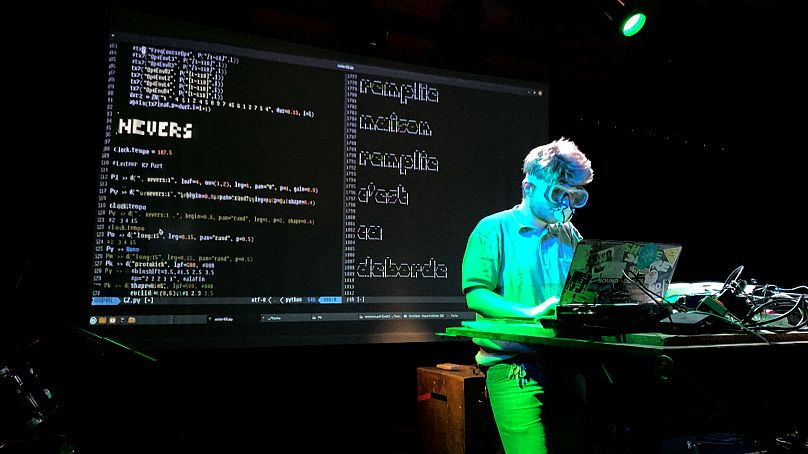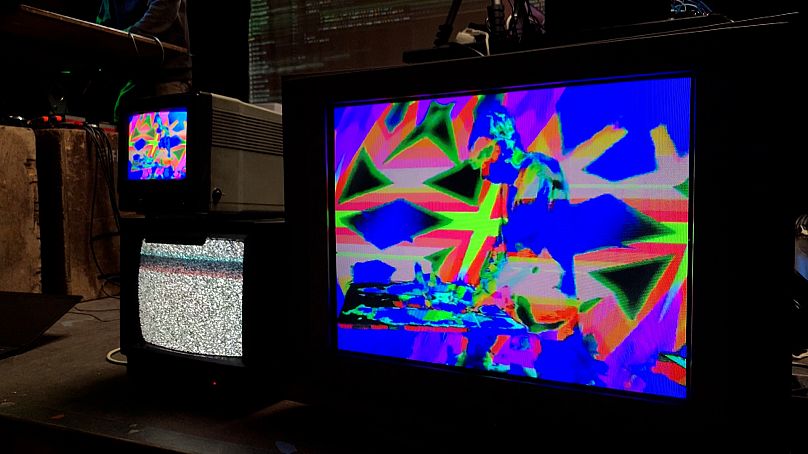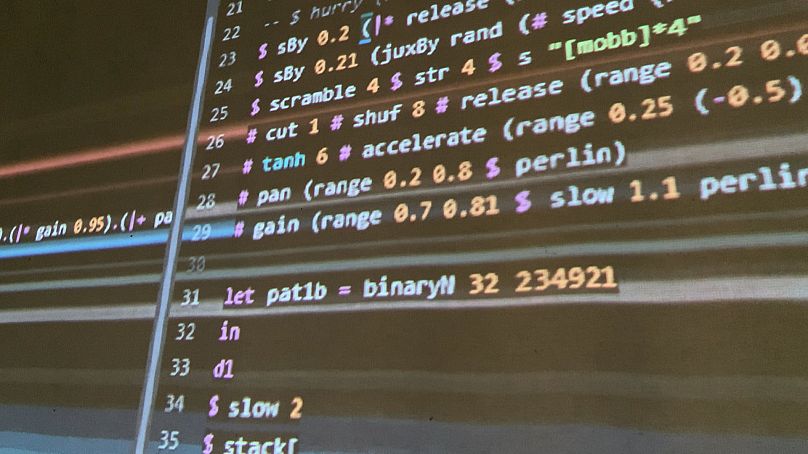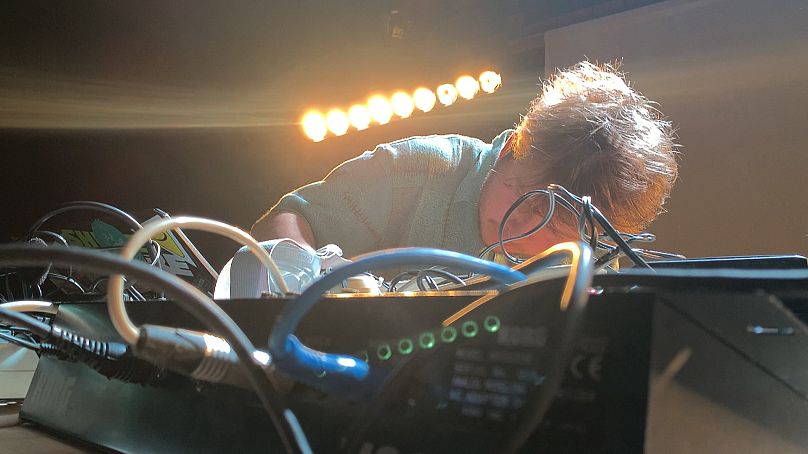Part experimental technique, part musical composition, "live coding" is still a little-known technique for the general public. Its principle: create music in real-time by programming computer code
Somewhere between an experimental technique and musical composition, "live coding" is a little-known practice. Its principle: creating music in real-time by programming computer code. Vaulx-en-Velin, a city in the outskirts of Lyon, is home to the largest "algorave" in France where all music is coded live.
There's no sign to advertise the entrance of the algorave, instead the letters GZ point the way to a wide-open gate in a disused area of the city.
GZ is the abbreviation for Grrrnd Zero, an "alternative" concert hall in Vaulx-en-Velin, where artists from all over France gathered recently to perform in the main hall.
There are no instruments or DJ set on stage, but simply a laptop and mixing consoles. Artists program live music using computer code and algorithms. The practice can be experimental but also very elaborate and designed to make people dance.
"Everything is possible, thanks to live coding," enthuses Jacopo Greco d'Alceo, an Italian composer who has come to live code as a duo this evening. For him, it's not just a style of music, it's a global system, a unique way of creating music. This technique also allows him to create scores, he explains while sitting at the bar of Grrrnd Zero.
With its futuristic appearance, live coding has been around for about twenty years. The algoraves as such were born in 2012 in the UK, under the impulse of Nick Collins and Alex McLean, two musicians and researchers.
A few hours before the concert starts, the artists come by to make the final adjustments on stage and to familiarise themselves with the venue. CRT screens and analogue cameras are displayed on stage, here, people appreciate technology in its pure state, without being purists.
"Bringing together the whole French scene"
"We've pulled out all the stops to organise an all-night event," explains Rémi Georges, who is organising the event with Raphaël Forment, a PhD student in musicology specialising in live coding.
The speakers are on from 6 pm until 6 am, with an unprecedented line-up that represents the biggest event of its kind in France. Tonight's mission is to "bring together the entire French scene", as well as a few artists from Italy, the Netherlands and the United States, says Rémi Georges. In the longer term: "to create a unity within the French scene which is quite disparate and fragmented".
Georges and Forment are two enthusiasts in search of new sounds: "I was looking for ways to make rhythmically complex music", explains Rémi Georges. It was when he met Raphaël Forment that he discovered this universe. He also uses this technique to control synthesizers and all sorts of devices that produce sound.
"The noise of the machine"
Kaleidoscopic atmosphere and cosmic sounds, a duo composes to the rhythm of a stop-motion animation projected behind them. The moment is meant to be unique, and ephemeral, in the same way that an electric guitar or trumpet improvisation is unique when played on stage.
Cables, power strips and mixing consoles of all kinds separate the audience from the stage. The empty room, where the walls are decorated with graffiti, is home to about sixty people who move around freely.
The artists follow each other between zany sounds and discordant tones. Raphaël Forment circulates between the stations to make sure that everything runs smoothly. "Live coding attracts experimental artists, those who like electronics, those who like the noise of the machine," he explains. These machine lovers enjoy the "rough edge of a synthesizer and the fact that a computer glitches."
As the performance is instantaneous, there is no studio preparation, which means that "sometimes it can be a bit crunchy," admits the PhD student. As proof that the practice is growing: "More and more people are trying to apply live coding to more conventional music, to try not to slip, to make things very clean."
An interactive practice
For each performance, the artist's computer screen is projected behind him to show the computer code. "The audience can follow what we are doing," enthuses Francesco Corvi, a live coding artist.
Coming from the Netherlands where he studies at the Institute of Sonology in The Hague, the musician has been practising for five years and has followed the evolution of this method. "I think live coding is becoming more widespread," he explains. "At the first algorave I attended in Rome, nobody understood what was going on. Now you always see people who have heard about it and are interested. It's growing."
You don't need to be an expert in computer code to do live coding or understand what is displayed. The language used is often "transparent", a line for a drum melody will be called "drum", and a line for a synthesizer "synth". The syntax used is as short as possible to make it easier for artists to type the code, especially when performing live on stage.
"It's an easy code to read so that it's more communicative with the audience even if they don't understand everything the code implies," explains Raphaël Forment. "You can do live coding without knowing how to program, without being a musician. It's the same as discovering an instrument, the first time you use a trombone, you don't know how to blow into it, you don't know how to read the score."
At the entrance, audio cassettes and vinyl are available for sale along with a flurry of leaflets promoting upcoming events. Organisers hope to host the third algorave event in the same venue next year.















